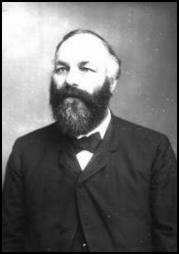
Edward Aylsworth Perry
(March 15, 1831 -- October 15, 1889)
| Section: | 15 |
| Space: | 1 |
| Lot: | 27 |
| Spouse: | Wathen Virginia Taylor |
| Place of Birth: | Richmond, MA |
| Military: | Civil War |
| Occupation: | Government |
| Comments: | BGEN CSA |
Boosted education as Fourteenth Governor of Florida. Served in his adopted state as Confederate General. Edward Aylsworth Perry lived most of his adult life in Pensacola and served as the state's fourteenth governor from 1885 to 1889. During the Civil War he was a Confederate Brigadier General. Perry grew up on a farm outside Richmond, Massachusetts. At 19, he went to Yale and there he met a classmate who was from Alabama. During the summer he came south to see the friend and, later, settled in Greenville, Alabama. While teaching there, he studied law. When he received his degree, he moved to Pensacola and set up his law office with Richard L. Campbell. He established a successful law practice and, in 1859, married Virginia Taylor of Greenville. The threat of war soon changed the life in Pensacola and the nation. Perry's wife was a Southerner and he had elected to live in the South. While his family in Massachusetts remained faithful to the Union. Perry cast his lot with the Confederacy .In 1861 he raised a Florida company. Initially, a company captain, he advanced to the rank of colonel in May 1862. He was severely wounded at Frayser's Farm during the Seven Days battles in June 1862. He was promoted to brigadier general in August 1862 and led the Florida Brigade at Chancellorsville in May 1863. He contracted typhoid fever and was not in Gettysburg but returned to his brigade in September 1863. In the Battle of the Wilderness in May 1864 General Perry was severely wounded again and did not return to the battlefield. At the end of the war Perry resumed his law practice and devoted 20 years to his family, his practice and his hometown. He became active in politics but held no office although many of his political friends urged him to run for governor. Finally, he decided to run; was elected in 1884 and served as governor of Florida until 1889. Public education in Florida is stronger because of Perry's administration. The State Board of Education was established and the first meeting of the Teachers and County Superintendents Association was held. An agriculture college was established at Lake City and two schools for training teachers were founded. Two private colleges "Rollins College and Stetson University" were established. Also, during Perry's term, a new Florida Constitution was written in 1885. It remained in use for the next 83 years. The state treasury grew and six new counties were created. Perry directed the reorganization of state troops and initiated a pension for veterans. In 1881, he proposed a memorial be erected to the Civil War dead, but it was not until after his death that the Confederate Monument in Lee Square that he suggested was dedicated. In 1882, the Perrys' bought the big house at Palafox and Wright streets purchased by First United Methodist Church in 2008 and renamed Perry Home/Wesley Abbey. Perry was active in Christ Episcopal Church and was a Mason. He belonged to the Osceola Club, a social club on the corner of Garden and Baylen streets, and once was its president. Less than a year after leaving office, Governor Perry died on October 15, 1889. The Pensacola Daily News ran a lengthy account of his life and service to his city and state .According to the report, about 1,000 mourners attended the service with 59 carriages and a long column of veterans joining the procession from Old Christ Church and Seville Square to St. John's Cemetery. Among the tributes to Perry was a resolution by the committee for public education that read: "In the death of Gov. E. A. Perry, we have lost a valued personal friend, a public benefactor, a faithful soldier, a wise statesman and a very dear friend to the cause of public education." He is buried in St. John's Cemetery 2 North, Section 15. | |